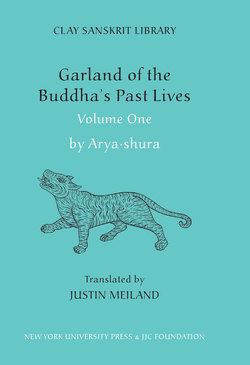Читать книгу Garland of the Buddha’s Past Lives (Volume 1) - Aryashura - Страница 29
На сайте Литреса книга снята с продажи.
Оглавлениеmanuscripts N and T. All such departures from Kern’s edition are listed at the end of this volume. Hahn’s text-critical comments (2001) on stories 33 and 34 have also been invaluable. Finally, the Jatakamala translations by J.S. Speyer (1895) and Khoroche (1989), both of them pioneering works in their own time, have been constant sources of help and inspiration.
Notes
1The present Thai king, His Majesty King Bhumibol Adulyadej, recently produced an adapted translation of the Mahajanaka Jataka, a scene from which is depicted on cinema screens throughout Thailand during the royal anthem.
2Luders (1941: 139) discusses an inscription of a verse from the Andabhutajataka at Bharhut. This is one of the earliest surviving written citations of a canonical text.
3K.R. Norman (1997: 104f.) argues that the Sanskrit word bodhi/sattva is a back formation from the Prakrit bodhi/satta, the Sanskrit equivalent of which is either bodhi/sakta or bodhi/sakta. These two compounds can be translated as “aspiring for awakening” (literally “attached to awakening”) and “capable of awakening” respectively. The compound bodhi/sattva has the significantly different meaning of “awakening being,” or to use Monier-Williams’ translation: “one whose essence is perfect knowledge” (see Monier-Williams s.v.).
4Royalty: stories 2, 3, 8, 9, 10, 11 (Shakra, king of the gods), 13, 15 (fish king), 17 (Shakra), 22 (goose king), 27 (monkey king), 32, 33. Brahmin: stories 1, 7, 12, 19, 21. God: stories 11, 17, 29. Ascetic: stories 1, 7, 18, 19, 20, 21, 23, 28, 32. Animal: stories 6, 15, 16, 22, 24, 25, 26, 27, 30, 33, 34.
5The word arya is a term of respect. Sura is also called Acarya Sura and Bhadanta Sura. See Khoroche (1985: 63).
